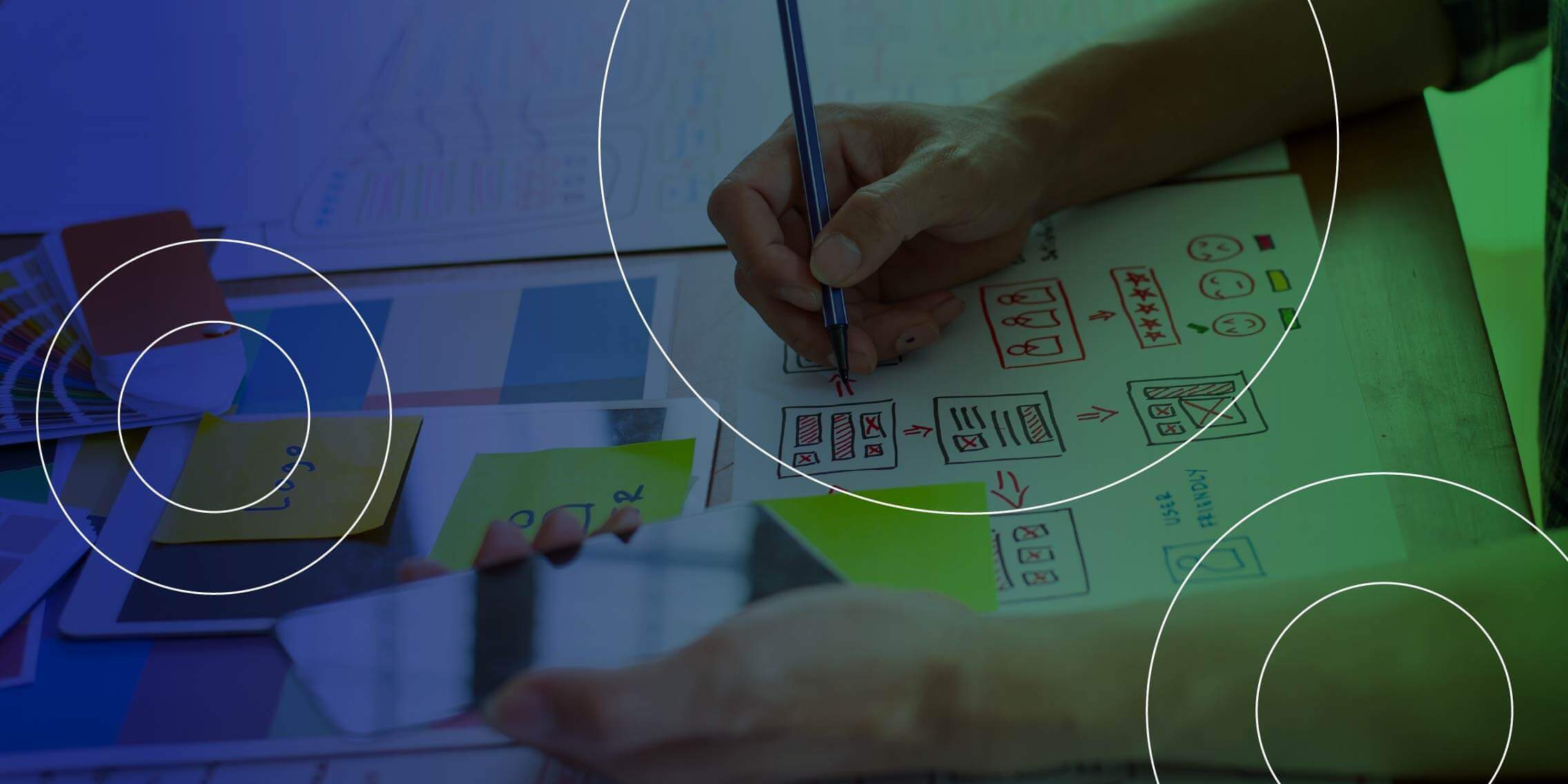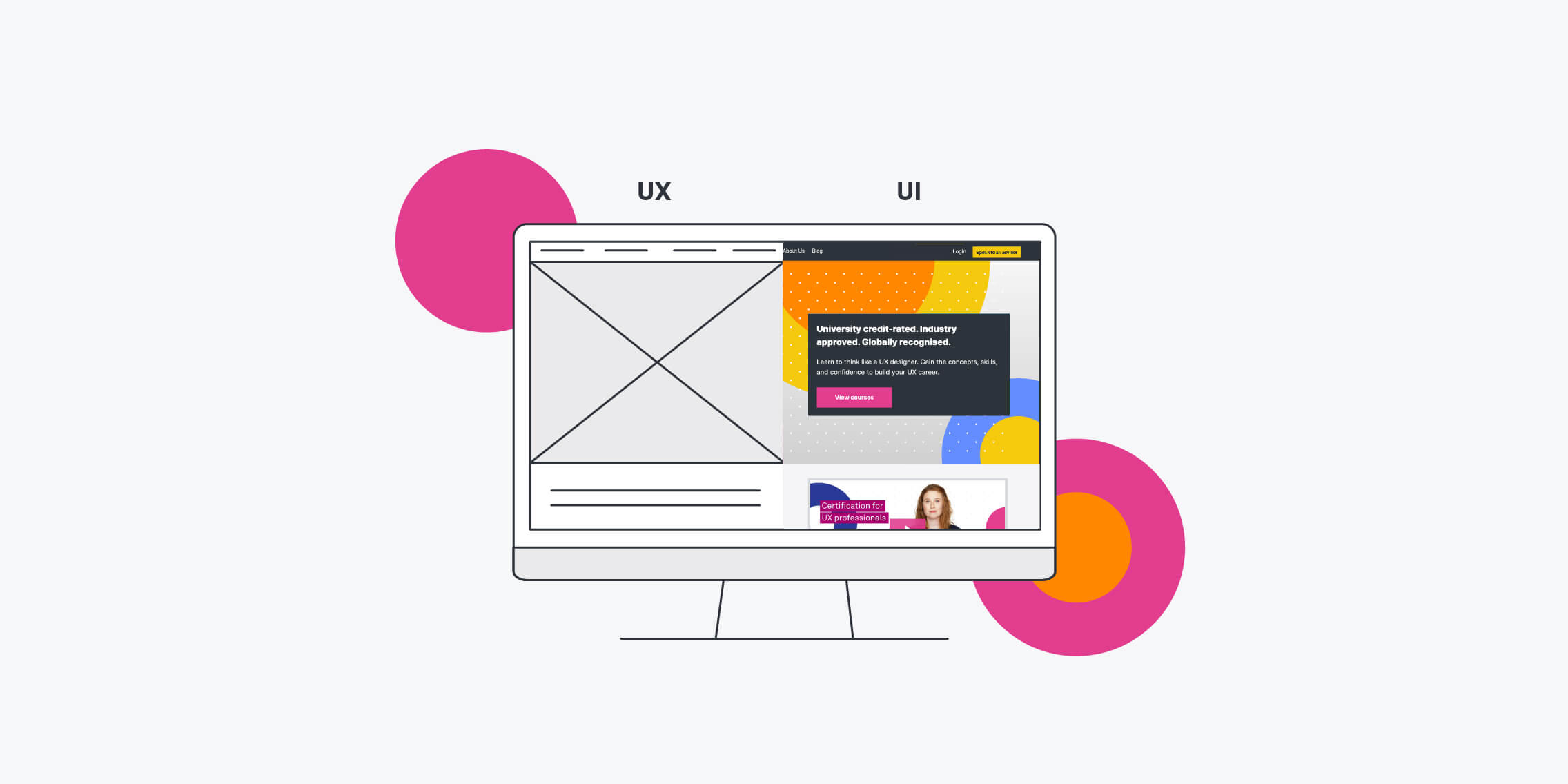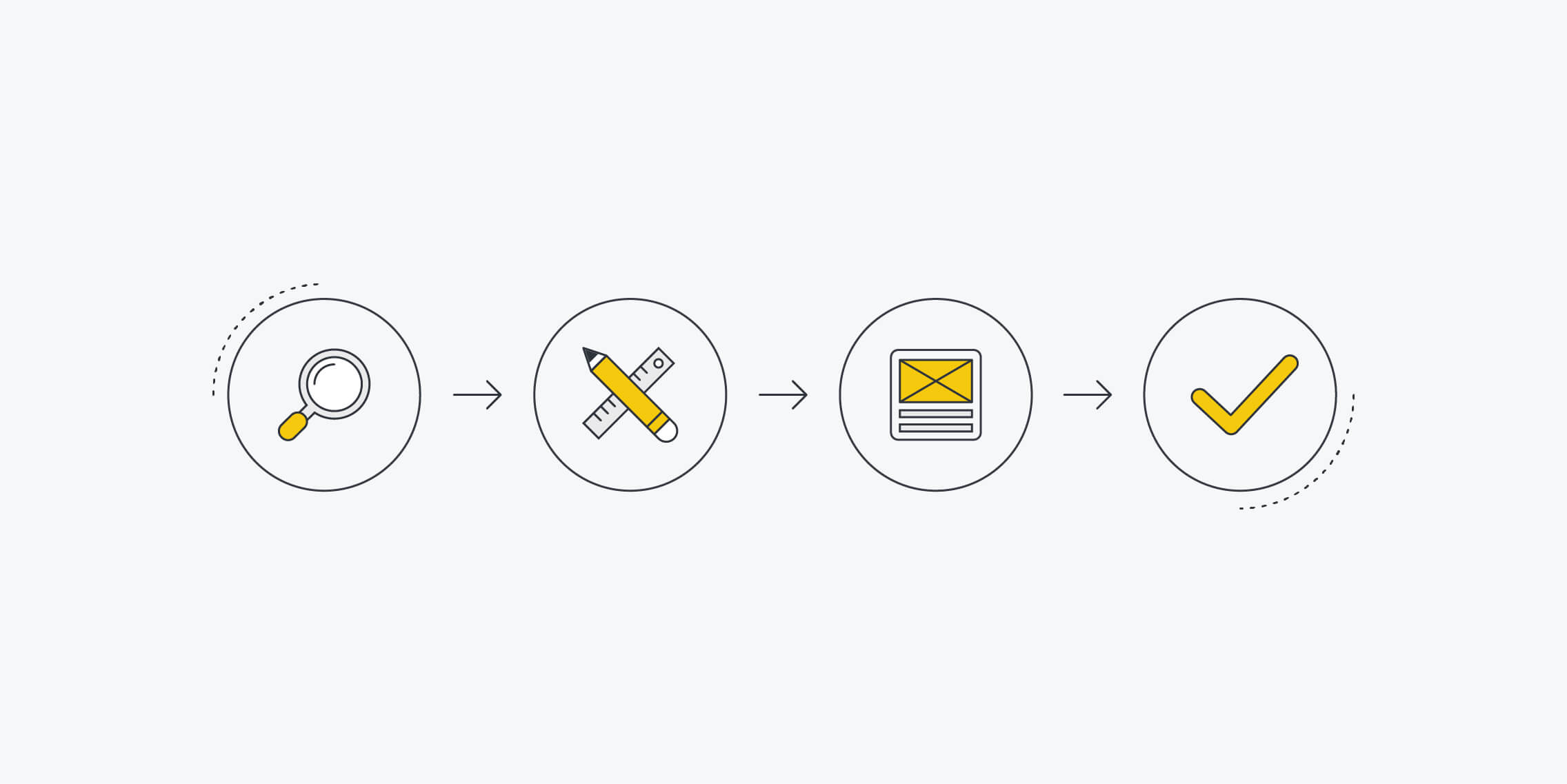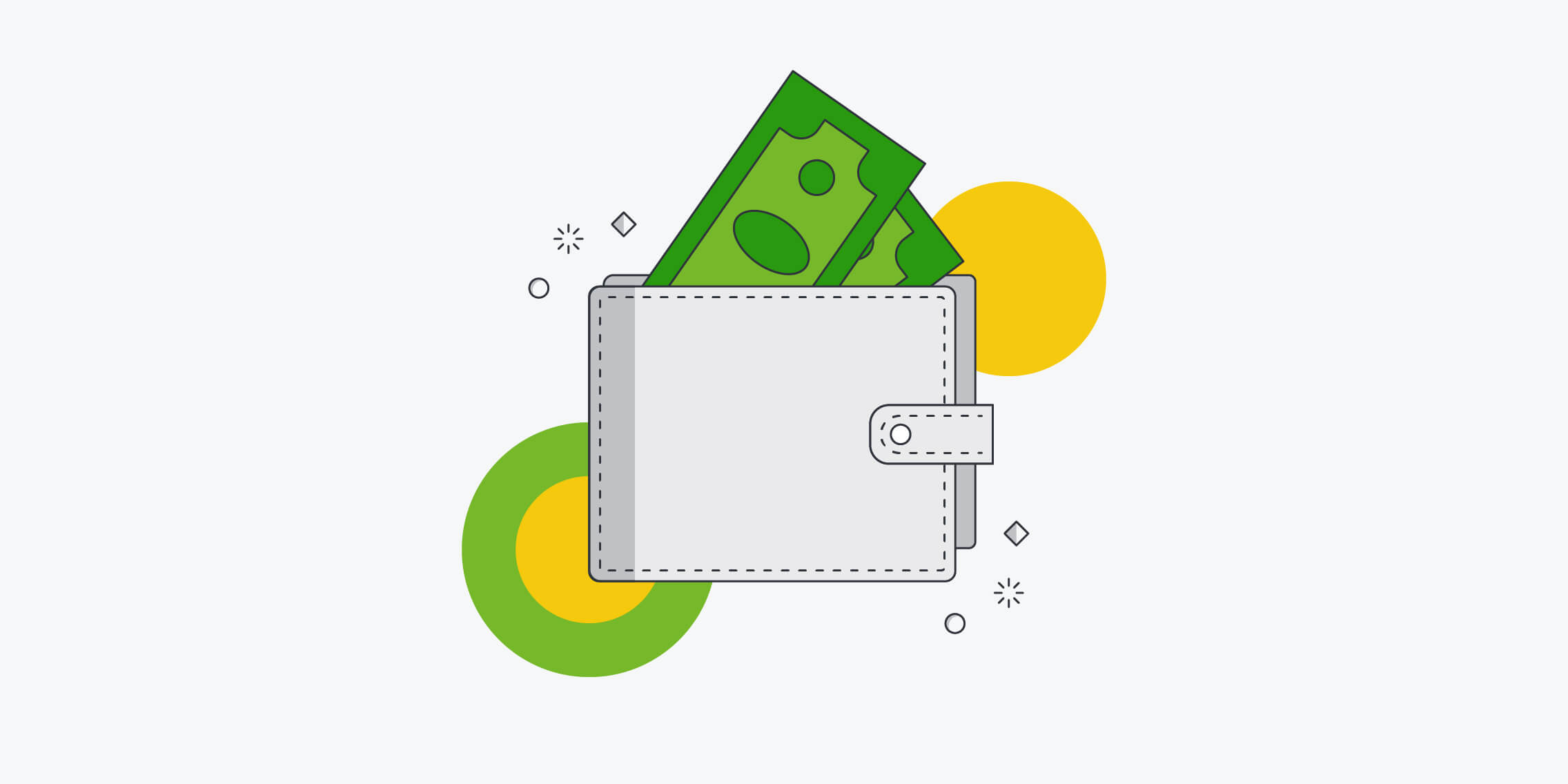Even the most experienced UX designers can struggle to define exactly what they do.
In this article, we provide a thorough answer to the question “What does a UX designer do?”
We’ll look at day-to-day tasks, where UX designers work, how they progress in their careers, and what skills are needed to excel in the field.
Here’s a list of all the topics we’ll cover:
- What is UX design?
- What is a UX designer?
- What does a UX designer do?
- Where do UX designers work?
- What’s the difference between a junior and senior UX designer?
- How do UX designers advance in their careers?
- What skills do you need to be a UX designer?
- How much do UX designers earn?
- How can I break into UX design?
What is UX design?
UX stands for user experience and it focuses on how it feels to use a product, app or website.
UX design is the process of creating and designing user experiences, with the goal of ensuring that the product and everything surrounding it is user-friendly, easy to navigate, and valuable for the end user.
Note that UX design is a problem-solving endeavour: it starts with identifying a user problem and designing products or services that offer a solution.
As a discipline, UX design is broad and varied. There are 5 main elements of UX design:
- Strategy, which considers the goals the product should meet (both for the business and for the user)
- Scope, which looks at the features and functionality the product should offer
- Structure, which considers how the product will be laid out and how the user will navigate the product and use it to accomplish their goals
- Skeleton: the finer details of how each page will be structured and which elements will be placed where
- Surface, which encompasses the design of how the product will look, feel, and behave from a sensory perspective
The world has become increasingly reliant on software, from ordering a pizza to checking your bank balance to booking a hotel. UX design helps create the products that make these things possible.
UX design is important because it ultimately determines how users (i.e. customers) feel about a brand and whether or not they return. As such, the value of UX is huge, and the most successful companies prioritise it.
A well-designed product should be simple to use. It should evoke positive feelings like confidence, trust and enjoyment in the user. A poorly designed product, on the other hand, can make a user feel confused or distrustful.
If you take shortcuts in the UX design process, it will affect the overall product quality. That’s why good UX designers carefully follow the UX design process.
You can learn more about what UX design is in this video:
What is a UX designer?
UX designers are responsible for creating products or services that ensure a positive experience for the user while meeting overall business goals. They follow the UX design process to understand the needs, goals and pain-points of their target audience and to design and test potential solutions.
UX designers are experts in putting the user first and advocating for them throughout the design process. They also understand the business strategy, making sure that the solutions they design will bring value to the company or client.
It’s important to be aware that UX designers do not focus on how products look. They are concerned with how the user moves through and interacts with a product, ensuring a logical layout, structure and navigation system, as well as functions and features that help to solve the user problem. The visual design comes last and is the responsibility of the UI designer.
We’ll learn more about what a UX designer is and what they do as we explore their day-to-day tasks, the tools they use, where they typically work and more.
What does a UX designer do?
The day-to-day tasks of a UX designer are determined by the UX process. The UX process broadly consists of research, design, and testing and validation. Based on that, the typical tasks and responsibilities of a UX designer include:
Conducting user research
Listening to, observing and trying to understand users is the foundation of good UX design.
At the start of any new project, a UX designer will conduct user research (or analyse existing research) to understand what the target user needs and wants from a particular product or feature.
User research can be quantitative or qualitative and it includes techniques such as user interviews, surveys, card sorting exercises, observations and focus groups.
Various research techniques from surveys to usability tests can help UX designers learn about their users’ behaviour and figure out what their problems are.
Learn more about UX research and why it’s important (as well as the tools designers use to conduct user research) here.
Defining user problems
After a UX designer has conducted user research they will move onto the analysis phase. This is where they try to make sense of the user research. They will analyse and articulate users’ problems, behaviours and goals in workshops. Items like affinity diagrams, customer journey maps and personas are important here. This analysis will help define the design problem(s) and inform design decisions.
Designing
When UX designers have finished analysing their user research and uncovered potential problems or barriers, they will move onto the design phase. They will have done a huge amount of work before getting to here. This involves different projects like creating flow diagrams, prototypes and wireframing.
UX designers create flow diagrams to give a bird’s eye view of how different elements of the product interconnect. They map out how users reach their goal and how they move through a website or app. They are made using UX tools like Figma and Adobe XD.
Prototypes validate UX design decisions, helping companies avoid making expensive mistakes. Once these prototypes are finalised, UX designers will make wireframes to hand over the designs to developers.
User testing
Design validation doesn’t stop once the wireframes are handed to developers. UX designers should continually test and gather feedback on their designs.
This feedback is essential whether you’re designing a new feature or improving an existing one. UX designers should regularly conduct A/B tests, polls, surveys and usability tests to improve and optimise the user experience.
UX designers should understand the full UX process even if they’re not involved at every stage. It’s important to keep collaboration going and avoid working in silos.
Where do UX designers work?
UX design applies to any product or service that’s used by people, so UX designers work in all different types of companies, across a variety of industries. UX designers can work in-house for one company, at an agency or freelance.
New UX designers should consider where they would ideally like to work and if they want to be permanent or freelance. Here’s what can be expected.
A contractor or freelance UX designer can expect to be contracted out to different companies to work on specific projects for short periods of time. Many UX designers love the flexibility of the contractor lifestyle, plus they can work on different kinds of projects.
A UX consultant is generally self-employed. They lend their areas of expertise to advise different companies for fixed periods of time. UX consultants often help businesses achieve their business goals with UX.
For UX consultant, Angus, this involves “helping clients understand where they are and where they fit within a market”.
A UX designer in an agency will likely be exposed to many different projects. They may work with big businesses or work with smaller companies who don’t have UX resources. Agency environments tend to be orientated towards either mobile or web design.
Cassandra (UX designer) gets to work on a diverse mix of projects at her agency, Pomegranate: “I recently worked on a research print for a YouTube star which has been really, really fun.”
In a big multinational company, UX designers can expect more defined roles and responsibilities. They don’t tend to stray outside the remit of their job description, and can work alongside UX researchers, UI designers and UX writers. These defined roles allow large companies to operate more efficiently.
In a startup or smaller company, a UX designer could expect to take on all of the roles within the UX design umbrella if they’re the only designer. They can expect roles to become more defined if their team expands.
Alessio (User Researcher/UX Designer, IES Ltd.) could be described as a UX generalist at his company. He told us, “my job title is User Researcher/UX Designer. So my main focus is user research but I also look at the full UX design.”
There’s a lot of confusion surrounding UX job titles in different companies. Many companies have product designers, service designers and experience designers with obvious UX design responsibilities.
Jade Grainger (Career Services Advisor, UX Design Institute) addresses this confusion: “don’t worry, companies always alter job titles. It comes down to a company’s focus and needs. Sometimes these UX professionals work across different teams from marketing to customer support to product”. She says to keep an eye on what software is listed in the job description too, “this can give you a huge understanding of what the role entails. If you see Figma, Sketch or Adobe XD it likely involves UX design”.
Learn more about UX job titles: 11 popular UX job roles explained.
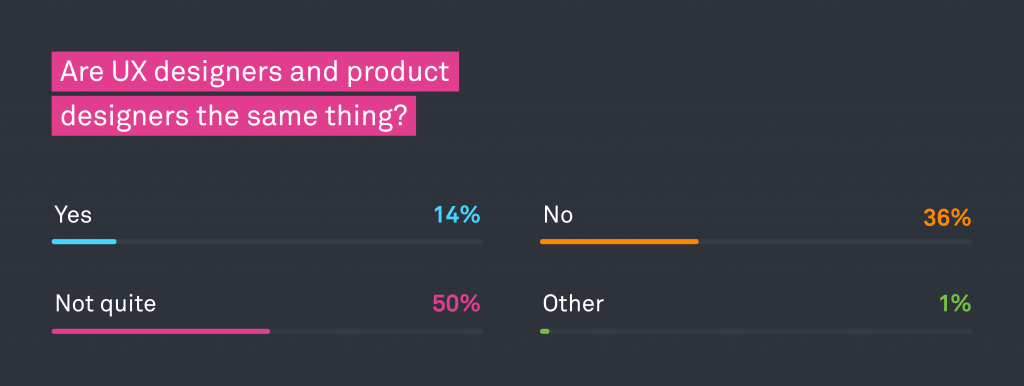
What’s the difference between a junior and senior UX designer?
Many companies don’t differentiate between junior and senior designers in their job titles. Factors like experience and transferable skills can influence what you’ll be working on.
Junior UX designers can be expected to take on more organisational or supportive responsibilities like planning workshops and putting final touches on items like personas and customer journey maps.
Even if junior designers aren’t making final decisions like a senior UX designer, they should be contributing ideas throughout the design process.
A good UX manager should provide opportunities for new designers to learn about different stages of the UX design process. If they don’t come your way, grab opportunities where you can learn. Sometimes this means doing less exciting work like coordinating research activities, coordinating invitees, and supporting sketching sessions.
It’s important to find an environment where you can learn.
Senior UX designers tend to have more responsibilities than junior designers. The senior designer may also delegate tasks to the junior designers and coach them. They may also take on a broader, more strategic view of both UX and business goals than a junior designer. A junior designer might be more focused on specific tasks.
Junior and senior designers should both be empathetic towards users and have strong collaborative skills.
These soft skills can be developed with time and experience. A senior designer might have an easier time with stakeholder management and defending their design decisions.
How do UX designers advance in their careers?
When you’re considering switching to a new career, it’s worth considering how your role can evolve in terms of long term development opportunities.
Many UX designers prefer to be generalists, but others may want to change focus over time. It’s worth noting that there are more opportunities to advance and specialise in companies with mature UX teams.
Specialist areas like user research or UX writing have become more commonplace in larger UX teams. As designers progress in their career, they may develop a natural inclination towards certain areas of UX.
For example, a UX designer who is drawn to interviewing users could do user research specifically. UX designers with strong visual design skills could enjoy UI design.
UX specialists should always have a holistic view of the UX process. For instance, a user researcher should have a good idea of how UX designers are applying their findings. A UI designer should have a good grasp of the user research.
There are also opportunities for senior designers to become team leads or managers. Many designers don’t want this but feel that managing people is the only way to progress. Sometimes they move into management because it pays better.
The truth is that many great designers can make bad managers. Thankfully, many companies are challenging this outdated idea and they’ve developed IC (individual contributor) tracks for senior designers to become design leaders. These paths are just as financially rewarding as team leads.
Senior designers who are interested in managing people should try out coaching less experienced designers to see if it’s a good fit for them.
It’s a common misconception that UX designers should code and be full-stack (a UX designer who can do everything). This is unrealistic. Businesses who expect professionals to be incredibly skilled in many areas, from UX to UI design to coding will have a difficult time finding the perfect employee.
What skills do you need to be a UX designer?
UX designers need to demonstrate a variety of both hard and soft skills. The most important skills for a UX designer include:
- Empathy and a user-centric mindset
- Problem-solving
- Communication and collaboration
- Curiosity
- The ability to organise and manage different projects and priorities
- Wireframing and prototyping skills
- The ability to conduct user research and testing
- A basic understanding of technology
- A good understanding of fundamental UX design principles
- Proficiency in UX design tools such as Adobe XD, Figma and Sketch
The great thing about UX design is that many of the skills required can be transferred from other fields. You’ll find a transferable skills checklist here detailing 7 important UX design skills you may already have.
How much do UX designers earn?
A career in UX design comes with high earning potential.
In Ireland, junior UX designers earn between €41,000 and €53,000. Mid-level UX designers can earn between €48,000 and €61,000, while senior UX designers can earn between €53,000 and €68,000.
We’ve written all about average UX designer salaries in different locations in our UX designer salary guide (including the latest salary data from different sources).
How can I break into UX design?
UX is a great conversion career because it welcomes skills from different disciplines and backgrounds. There are many ways to get started.
If you’re a complete beginner, you’ll need to learn the fundamental concepts, principles and methodologies of UX design. The best way to do this is through a course. Consider a university credit-rated UX certification for a credible, industry-recognised qualification in UX.
You will also need to build your UX design portfolio. A UX portfolio is a collection of your best UX project work, usually taking the form of a website. Your UX portfolio shows employers that you’re able to apply your UX skills to real projects in a practical way, so it’s a key part of your job application package.
We show you how to create a UX design portfolio from scratch here.
For more tips on how to break into UX design, take a look at our UX design for beginners guide. In it, we outline the practical steps you can take to start learning UX design and detail the topics you should focus on learning first.
Now you know what a UX designer is and what a UX designer does. Continue exploring with this glossary of 101 UX terms all designers should know.

